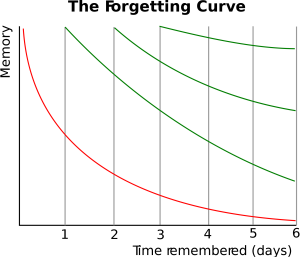Have you ever dreamed of being able to process large amounts of information in no time? If you have, then it’s high time for you to become a speed reader!
In this paper, Lucy Adams, an essay writer and blogger from a website that can boast of the best essays, shares a few secrets of information management that will help you to boost your reading speed.
If you already have some success with the suppression of silent speech, then you’re likely to encounter a problem of poor assimilation of the information covered. And there is nothing strange – your brain gets much more information than during the usual reading, not knowing how to cope with it.
Below are specific techniques and exercises to manage information when speed reading.
#1 Set the Purpose of Reading
Set a specific goal every time before you start reading. The text may contain 99% of the useless information, and you need to catch that 1% that makes sense. When you have a goal, it becomes much easier to read and maintain a high level of concentration.
#2 Take Notes
Many texts have a similar structure, for example, paragraphs in the textbook of history. By studying a specific historical era, you have to find the data that refers to this age – rulers, wars, laws, economic conditions, specialization in production and so on – and allocate it. When reading the historical text, do not forget to pay attention, first of all, on these facts, structuring them in mind.
Again, you need a plan and a goal. What do you want to learn from the text? Take notes while reading to be able to structure and subsequently reproduce the text read.
You can also read books to enrich your vocabulary. Find a new word, record it, and be sure to specify the page on which you found it so that you could go back to the context. After reading, take some time to work with the dictionary. Clarify new terms and definitions. Such actions will help to significantly enrich your verbal arsenal.
Reading may become meaningless without note-taking or at least putting specific marks in the text. In no case neglect structuring and summarizing!
#3 Take Paragraphs as Markers
In the lion’s share of cases, a new paragraph begins when the previous point is disclosed. Therefore, take paragraphs as markers (informative text units) when speed reading. If you’re skillful enough to perceive the text of a paragraph at a glance, try to find the meaning of each paragraph on the page by just covering them with eyes.
Every paragraph has keywords – meaning words and phrases – and is a complete unit of meaning. Therefore, problem statement comes first, and the solution of the problem is always put somewhere at the end of the paragraph. This scheme works in most cases, although there are exceptions.

#4 Learn to Fill the Gaps with Meaning
There’s a very effective exercise for aspiring speed readers:
- Take two small strips of paper equal to the height of the page, and close with them the fist and the last few letters (words) of the text. Try not to lose the line of the narrative.
If it goes easy, you can always increase the speed of reading or close more text with strips.
#5 Work on Your Memory
The development of memory is the last but not least exercise for a speed reader. In fact, it’s a necessary skill because if you are reading quickly and not able to memorize information, this process does not make sense.
The work of your memory can be divided into two stages:
- Short-term storage, which allows you remember absorbed information only for a short time.
- Long-term storage. It often happens that after reading, you remember well what you’ve just read. However, after a certain time, for example, the next day, you can’t remember much of what was learned the previous day. To avoid this, there are special repetition techniques.
Short-term storage
If you read an interesting book, most likely, you’ll remember its content to the smallest detail. Of course, a boring textbook will me much harder to remember. It would seem a banal truth; however, there are several additional properties that contribute to a better absorption of the text:
- Emotionality. Interesting texts call emotions that always help to memorize better – and not just the overall meaning but also concrete facts. You may remember the brightest moment for a lifetime!
- Visualization. When reading an interesting book, you delve in the material, while your brain is trying to reproduce the text into visual images, involving other senses. Of course, the more senses involved, the stronger the memorizing.
Long-term storage
Scientific studies showed that long-term storage is done not only by understanding and visualization but also multiple repetitions. And the most important thing is not the number of repetitions but the correct intervals between them.
In XIX century, Hermann Ebbinghaus revealed the so-called “forgetting curve” that shows how the process of forgetting occurs:

According to scientists, there are two popular modes of repetition of the material:
- If you have two days to deposit the information:
- 1st repetition – once the end of the reading.
- 2nd – in 20 minutes after the 1st.
- 3rd – in 3 hours after the 2nd.
- 4th – in 24 hours after the 3rd.
- If you have unlimited time:
- 1st repetition – once the end of the reading.
- 2nd – in 20 minutes after the 1st.
- 3rd – in 24 hours after the 2nd.
- 4th – in 2-3 weeks hours after the 3rd.
- 5th – in 2-3 months after the 4th.
To conclude, I must say that the biggest trick is to find the balance between all the elements that contribute to speed reading. I wish you best of luck in your reading endeavors!
Lucy Adams is a blogger and freelance writer. She’s always interested in something intriguing and exciting. Lucy loves thinking out of the box so that you’re always welcome to share your brightest ideas with this diligent author. Custom writing, high-quality assistance, and much more writing power awaits you on buzzessay. Ping Lucy at lucyadams@buzzessay.com and get one more high-quality, exclusive guest blog.


Nice tips and techniques of reading faster. It has given me some new ideas and as well as it made me remember few important points. Thanks for your valuable suggestions.